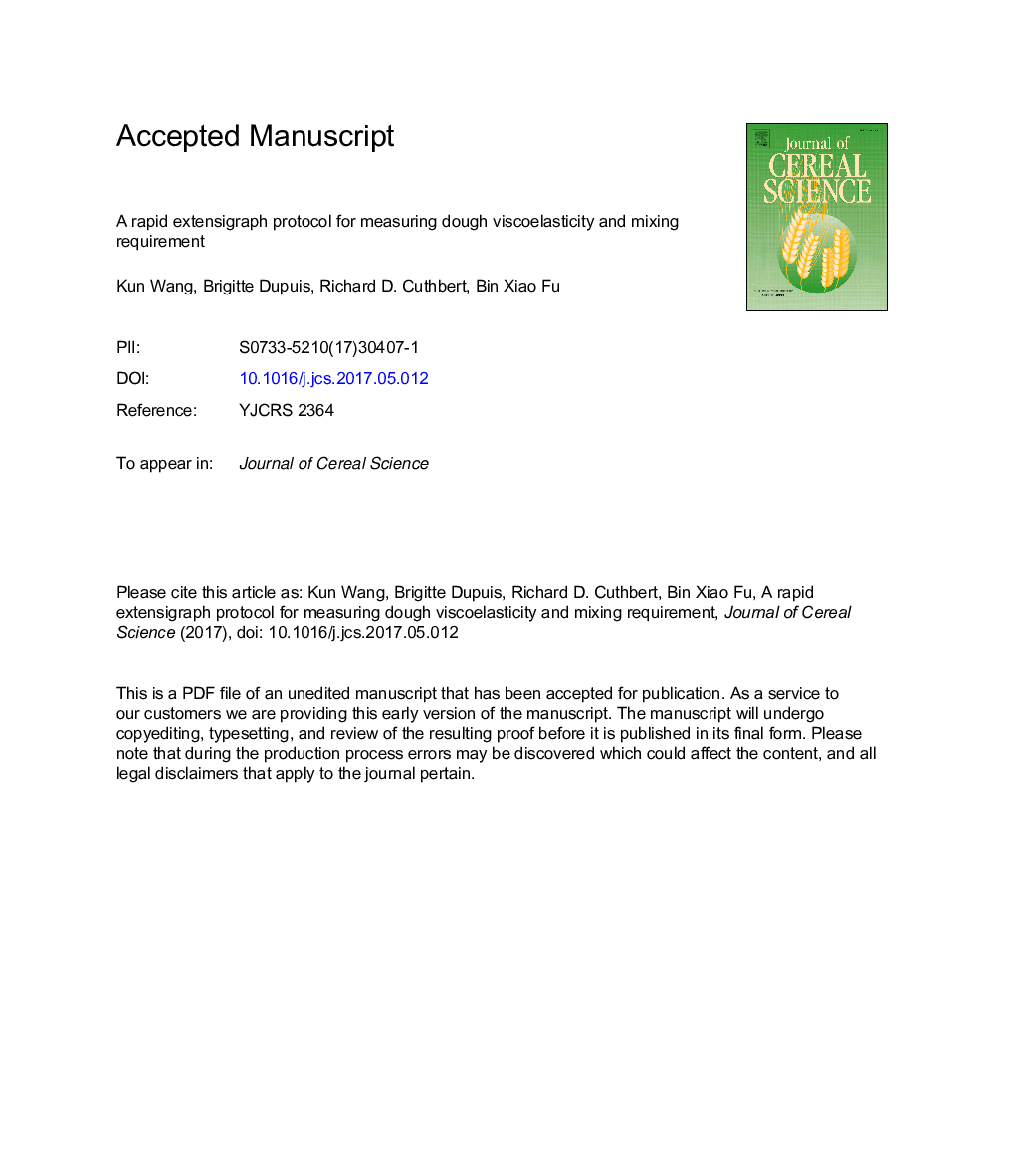| Article ID | Journal | Published Year | Pages | File Type |
|---|---|---|---|---|
| 5762316 | Journal of Cereal Science | 2017 | 33 Pages |
Abstract
The extensigraph is particularly useful in characterizing dough viscoelastic properties; however, testing throughput for standard method is low due to the prerequisite for farinograph water absorption, long dough resting and milling to prepare large amounts of flour. Therefore, a rapid extensigraph method was developed that reduced sample size (165 g wheat) for milling and more than tripled throughput. Wheat is milled in Quadrumat Junior mill with a modified sieving system. The resulting flour (100 g) was mixed with a pin mixer at constant water absorption to allow the evaluation of wheat genotypes at the absorption level they are expected to perform. Dough was subsequently stretched by an extensigraph after 15 min of floor time and 30 min resting. Strong correlations for extensigram Rmax (r > 0.93), extensibility (r > 0.64) and area (r > 0.88) were found for the proposed method compared to the standard method. Mixing parameters (time and energy) obtained during dough preparation provided further information about dough strength and mixing requirement. By significantly reducing sample size requirement and increasing testing throughput, this rapid extensigraph method can be widely adopted in milling and baking industry and meets the need for a fast evaluation of dough strength in breeding trials.
Keywords
Related Topics
Life Sciences
Agricultural and Biological Sciences
Agronomy and Crop Science
Authors
Bin Xiao Fu, Kun Wang, Brigitte Dupuis, Richard D. Cuthbert,
